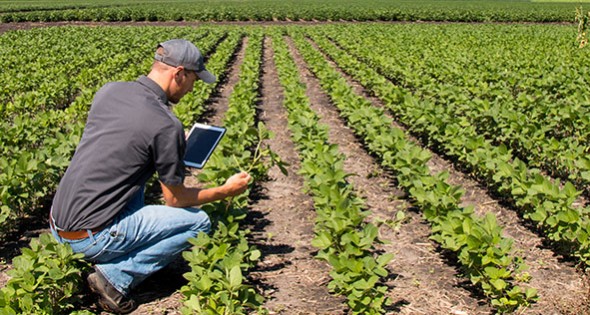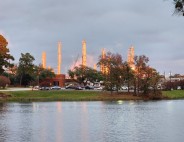
Agriculture Economy Barometer More Optimistic
07 Dec, 2017
Producer sentiment toward the agricultural economy improved slightly in October, according to a monthly survey of 400 agricultural producers from across the United States.
The Purdue University/CME Group Ag Economy Barometer landed at 135 in October, up three points from September. It represented the third-highest reading since data collection began two years ago.
The improvement was driven by the Index of Future Expectations, which increased from 130 in September to 137 in October. The Index of Future Expectations is one of the barometer’s two sub-indices. The other, the Index of Current Conditions, weakened slightly.
For the second year in a row, producers were asked whether they plan to make management changes, such as lowering fertilizer or seeding rates or adjusting their hybrid or variety packages for the upcoming cropping season. The share planning reductions in seeding rates and changes to their hybrid or variety choices for 2018 changed little from last October with 19 percent expecting lower seeding rates and 35 percent planning to adjust seed variety or hybrid packages. But the percentage of producers planning to reduce fertilizer usage in 2018 was noticeably smaller. Just one-third of respondents said they plan to reduce fertilizer rates in 2018, down from 46 percent a year ago.
“One possible reason for the smaller share of producers planning to reduce fertilizer rates in 2018 is prices,” said James Mintert, director of Purdue’s Center for Commercial Agriculture and principal investigator on the barometer project. “Fertilizer prices, particularly for anhydrous ammonia, are lower than a year ago. For example, recent price quotes for anhydrous ammonia were 20 percent lower than a year ago, with other crop nutrient prices exhibiting smaller price declines.”
Each quarter, producers are asked their expectations for crop prices in the coming year. Compared to July, fewer producers expect higher corn, soybean and wheat prices in the next 12 months. However, fewer producers also expect crop prices to decline over the next year.
For the first time, producers were asked about their expectations for farmland rental expenses in 2018. An overwhelming 80 percent of respondents said that they expect farmland rental rates to be unchanged in 2018 compared to 2017. The remaining 20 percent of respondents were split equally between those expecting rental rates to be higher and those expecting lower rates in 2018.
The full October report includes more information about producer sentiment toward farm machinery prices and overall farm expenses, as well as insights from the quarterly Agricultural Thought-Leader Survey.
Related Posts
-

IONNA, LLC, to Invest $10M in Global Headquarters in Durham, North Carolina, Creating 203 Jobs
-

Construction, Manufacturing and Fabrication Innovator RNGD Invests $25 Million to Expand Southeast Louisiana Operations, Create 130 Direct New Jobs
-

Novo Nordisk to Expand Johnston County, NC Operations with $4.1B Investment, Creating 1,000 New Jobs
-

Gov Kemp: Food Solutions Company Cargill to Create 400 New Jobs in Metro Atlanta Office Hub
-

RoyOMartin Announces $30 Million Modernization of Timber Manufacturing Facility in Southwest Louisiana
-

Four Business Expansions Bring 144 Jobs to Kent, Bay Counties
-

Sodexo Opens Its New North American Headquarters
-

FUJIFILM Diosynth Invests $1.2B in Holly Springs, North Carolina, Manufacturing Facility, Creating 680 New Jobs
-

Eastman’s second U.S. molecular recycling facility will be in Longview, Texas
-

Wisk and the City of Sugar Land, Texas, Partner to Bring Autonomous Air Taxis to the Greater Houston Region









